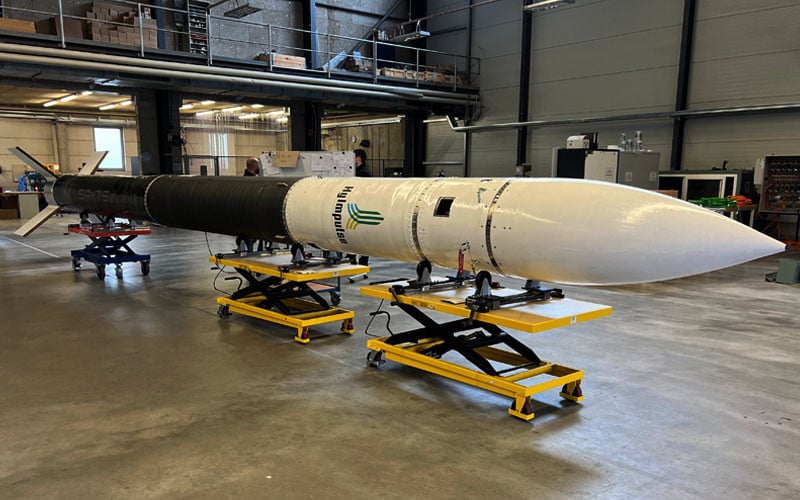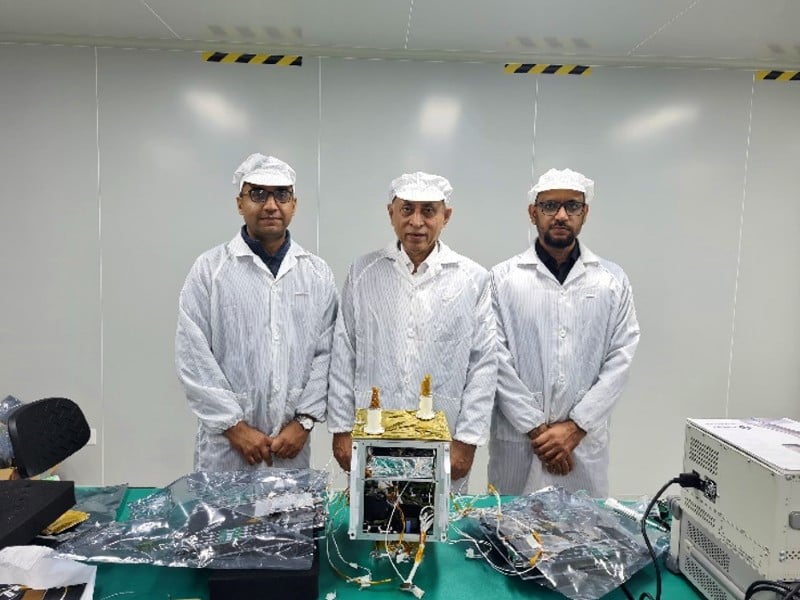In a groundbreaking development for space exploration, a German company has successfully launched a rocket powered by an unusual and sustainable fuel source: candle wax. This revolutionary test flight marks a significant step forward in the aerospace industry’s efforts to explore alternative, eco-friendly propulsion technologies. With the global push toward sustainable energy sources, this test flight brings new possibilities for rocket fuel technology, potentially reducing the carbon footprint of space exploration.
This achievement represents a combination of engineering innovation, environmental consciousness, and the ever-growing ambition to explore the final frontier. The use of candle wax as a fuel in rocketry not only sounds intriguing but also offers substantial benefits over conventional rocket fuels. Traditional fuels like RP-1 (refined kerosene), solid propellants, and cryogenic fuels such as liquid oxygen and liquid hydrogen, while effective, pose challenges in terms of production cost, environmental impact, and storage. Candle wax, on the other hand, is cheaper, more accessible, and has shown remarkable promise in preliminary tests.
The Rocket and its Unique Fuel Source
The German Company Launches Candle Wax-Powered Rocket behind this technological breakthrough has spent years developing a rocket engine capable of using candle wax as the primary fuel. This is a form of hybrid rocket engine, where a solid fuel like wax is combined with a liquid oxidizer to produce thrust. In this case, the company’s engineers have devised a highly efficient system where the wax acts as a clean-burning solid fuel.
Unlike conventional hybrid rocket engines that rely on more hazardous materials, the wax-based engine uses a non-toxic fuel that is biodegradable. Wax fuels are also safer to handle compared to cryogenic or highly combustible liquid fuels. They are stable at room temperature, meaning that they can be stored for longer periods without risk of explosion. Moreover, the solid nature of wax allows for precise control of the engine’s thrust by regulating the flow of the liquid oxidizer.
On this test flight, the rocket reached impressive altitudes, showcasing the efficacy of wax as a viable alternative to traditional fuels. Engineers reported that the rocket’s performance met their expectations, with consistent burn rates and efficient combustion throughout the test.
How Does Wax Fuel Work?
Wax fuels operate within a hybrid propulsion system. In simple terms, a hybrid rocket engine uses both solid and liquid or gaseous components. In the case of this candle wax-powered rocket, the wax is the solid fuel, and a liquid oxidizer, such as nitrous oxide, is introduced to support the combustion process. The wax is heated and vaporized during the flight, and the combination of the wax vapor with the oxidizer generates thrust.
The wax is stored in the rocket’s fuel chamber and is burned gradually, maintaining stable combustion throughout the rocket’s flight. The liquid oxidizer is injected into the combustion chamber where it reacts with the wax vapor, producing the energy needed to propel the rocket.
The advantages of this system are numerous. First, wax burns cleanly, producing far fewer pollutants than traditional fuels, making it an environmentally friendlier option. Second, the simplicity of the design makes the rocket lighter and cheaper to manufacture, as it requires fewer components than traditional rockets powered by liquid or solid fuels.
The Environmental Impact of Candle Wax as a Rocket Fuel
One of the key advantages of using candle wax as a rocket fuel is its low environmental impact. Conventional rocket fuels contribute to air pollution, releasing large amounts of carbon dioxide, water vapor, and other harmful chemicals into the atmosphere. In contrast, wax fuels burn much more cleanly, producing significantly less harmful emissions. The wax used in this German company’s rocket is biodegradable, adding another layer of environmental sustainability to the technology.
Moreover, candle wax is a renewable resource that can be produced relatively easily and in large quantities. It can be made from various materials, including soy, beeswax, and even recycled candle wax. These sources are not only sustainable but also cost-effective, reducing the overall expense of producing rocket fuel. With the growing concern over the environmental impact of space exploration, the use of eco-friendly fuels like candle wax could be a game-changer for the industry.
Challenges and Future Prospects
While the test flight marks an important milestone in rocket propulsion technology, there are still challenges to overcome. One of the main limitations of wax-based fuels is their relatively low energy density compared to traditional fuels. This means that while wax can be used for shorter flights or in smaller rockets, it may not be suitable for long-distance or heavy-lift missions.
However, engineers are optimistic about the future of wax-based propulsion. Research is already underway to improve the energy efficiency of wax fuels and explore new formulations that could increase the thrust generated by wax combustion. The potential applications of this technology go beyond space exploration; hybrid rocket engines using wax fuel could also be used in suborbital flights, sounding rockets, and other areas where lightweight, low-cost rockets are advantageous.
A Leap Forward in Space Exploration
The successful test flight of the candle wax-powered rocket is a significant leap forward for both the aerospace industry and environmental sustainability. It represents a fusion of cutting-edge technology and eco-friendly principles, demonstrating that it is possible to innovate without compromising the planet’s future.
As space exploration continues to expand, the demand for more sustainable technologies will become increasingly important. Companies and governments around the world are investing in research to find greener alternatives to conventional rocket fuels, and the use of candle wax is just one example of how unconventional thinking can lead to groundbreaking advancements.
The German company’s success serves as an inspiration for future generations of engineers, scientists, and environmental advocates, showing that the path to space can be paved with ingenuity and a commitment to sustainability. As research and development in this area continue, it is likely that we will see more rockets powered by candle wax, or similar materials, 4048064812 in the future. This test flight has proven that the impossible can be made possible, one flame at a time.
Conclusion
The candle wax-powered rocket launched by the German company is an innovative step toward sustainable space exploration. By utilizing a renewable, biodegradable, and safe fuel source, this test flight has opened up new possibilities in rocket propulsion. While there are still challenges to overcome, the success of this mission paves the way for future advancements in eco-friendly aerospace technologies. As we continue to explore the vastness of space, innovations like this will ensure that we do so in a way that protects our planet and pushes the boundaries of what’s possible.




